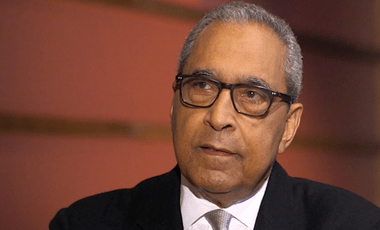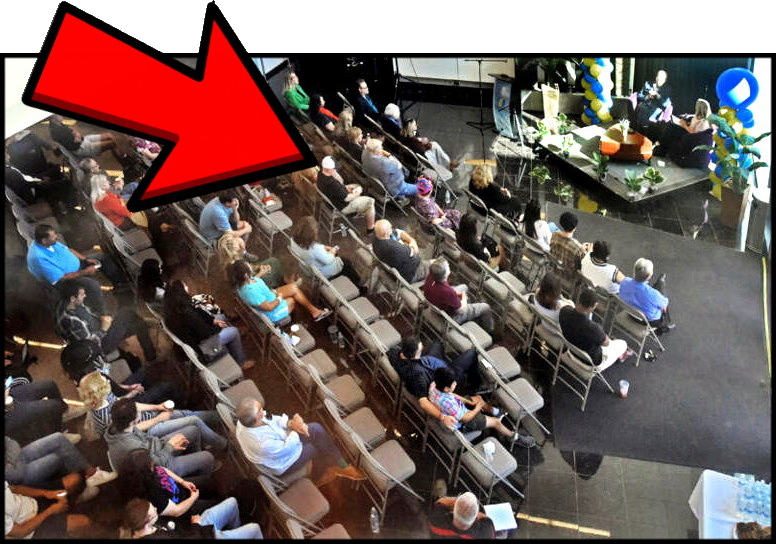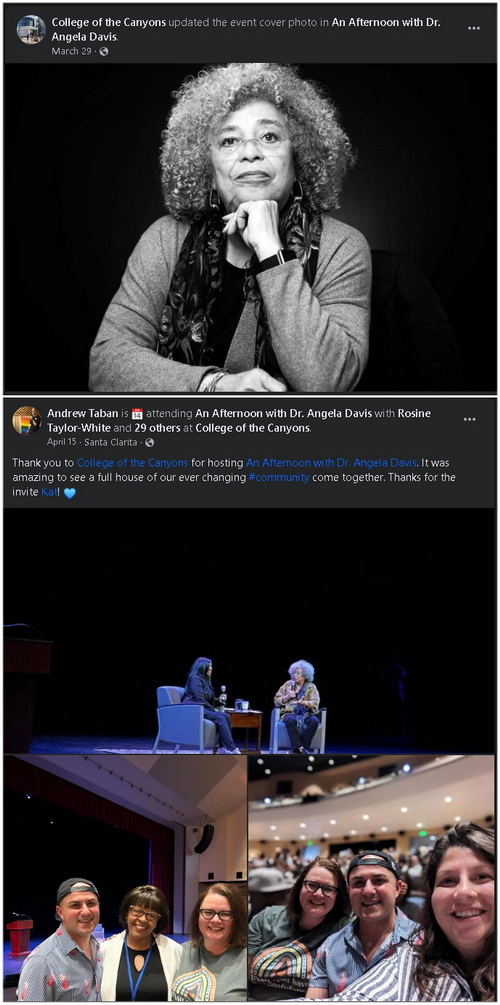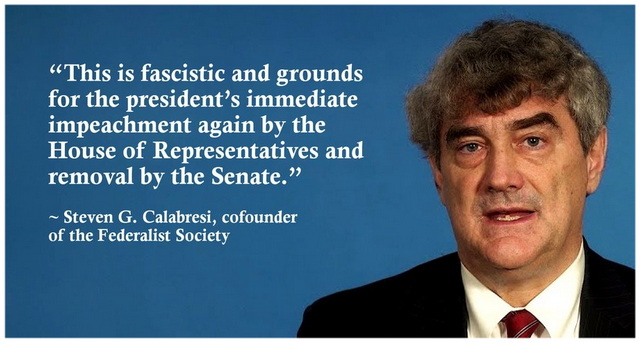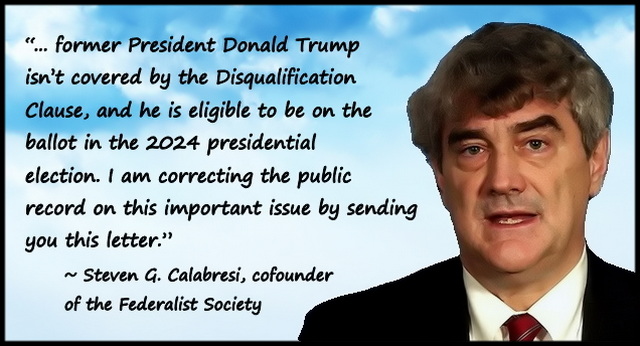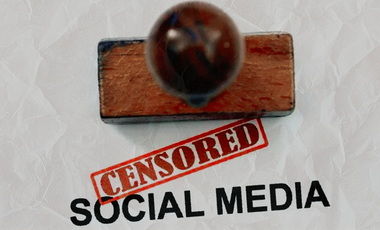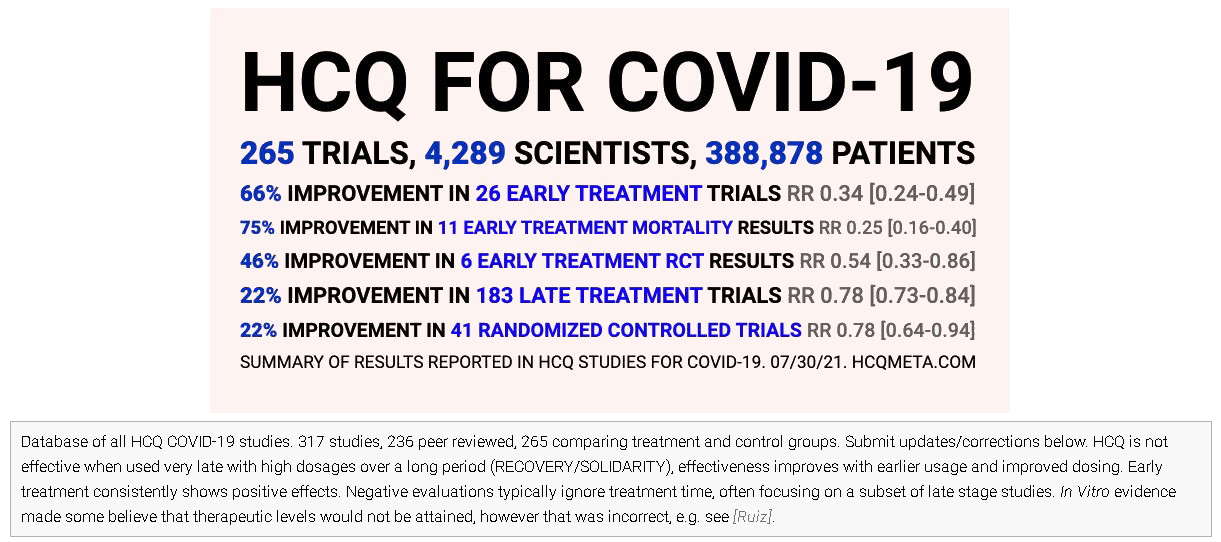For the person that could care less about what this retired felon has to say, most of the points made at College of the Canyons (COC) by Dr. Shelby Steele were made in this video (HERE) speaking at the Old Parkland Conference.
Below were the thoughts running through my head and me taking light notes during the time Dr. Shelby Steele’s time being interviewed. In fact, I have proof of my note taking: head down, tapping away. The following section will allow the reader to jump to topics or thoughts.
Any of the links in this next part will allow you to jump down the page to a section below. To get back to the menu, hit the back arrow in your browser.
JUMP TO THOUGHT/TOPIC
Dr. Shelby Steele spoke about some of the following – which inspired much thought and now this post:
INTRODUCTION – I have some Walter Williams going on as well as a link to my post on Angela Davis, whom C.O.C. had as a speaker in April.
- UPDATE: C.O.C. has excluded Shelby Steele from their Facebook, whereas the person he was coming in to add some balance to, Angela Davis, has announcements up before her event as well as the day of.
RACE HUSTLERS – “Follow the Money” | The D.E.I. grift (PART ONE) and how it backfires by John Stossel. I include a short “how many billions fat is DEI programs”? And keep in mind there is no winning with these folks.
INTERRACIAL MARRIAGE – This was a connection of sorts for me. Not quite as intimate as Doc Steele’s, but it helped me through a time in my young life where bigotry surely could have stained my heart. A short bio by me many years ago helps explain my outlook.
POWER, NOT WEALTH – Today we hear quite often that slavery made our country wealthy. Slavery, in fact, kept a good portion of our country poor. I include a quote from Thomas Sowell audio from Larry Elder as well as a quote from Frederick Douglas. The end of this section are some helpful article links for more information.
POWER & WEALTH – This is a quick reminder of the DEI grift (PART TWO) | Glenn Loury, John McWhorter & Dan Subotnik discuss the grift of Ibram X. Kendi with new revelations about missing monies. | And Douglas Murray discusses his noting the Kendi grifting a while back.
COERCION I – Historic religious Democrat segregationists changed the Bible to fit slavery | Alternatively, when the Bible was unleashed, the British and American abolitionist movement fought and ended slavery for the first time in world history… giving birth to the RepublicanParty. – save Muslim countries.
COERCION II – The fear of being accused of being a racist, or against the equality of others is a way the Left has weaponized modern censorship. This section features some Machosauce (Rachel Zo) commentary. And a graphic I made defining what a “Victicrat” is; followed by a video [one of my favorites] explaining how the Democrats get votes out of such coercions. Then another example of this maligning by Hillary Clinton,
COERCION III – Doc Steele mentions racism is over with. True. BUT, the media and politicians would lose power if this were understood to be the case, so I share a short montage of the media inflaming the SIXHIRB rhetoric: sexist, intolerant, xenophobic, homophobic, Islamophobic, racist, bigoted. (I link to a longer, 22-minute upload of mine).
HISTORY (A) – Knowing history is a good vaccination against the statements we often run into on campuses and social media. Even simple things like “…not every Democrat was a KKK’er, but every KKK’er was a Democrat.” Or the reasoning behind the 3/5ths clause in the Constitution. In fact, at one point Frederick Douglas thought the Constitution was a pro slavery document, partly due to the 3/5ths Clause. But later, he came to realize that in fact it was an anti-slavery document, because of the 3/5ths clause. I explain how people like to use earlier beliefs in a person’s life and use them as support when later these beliefs were rejected by said person themselves. This is done with Augustine as well. After the Prager U and David Barton videos, there is a “Lincoln Bonus”.
HISTORY (B) – “Stepping outside your lived experiences” | This just came to me today and sets up well the three [out of the many] videos of black YouTubers doing just that. These are channels that have previously commented on all sorts of things (sports clips, songs, interviews with icons, etc.). For whatever reasons, these Channels started to watch videos by the likes of Thomas Sowell, Carol Swain, and others. I love them because they catch real time revelations through well-reasoned evidence and histories they have never heard before.
HISTORY (C) – In this history section I deal a bit more with whom the KKK were terrorizing. Members of the KKK caried “playing cards” on their person with pictures of their targets to intimidate or kill. And bringing this to today I use an example of Mozilla CEO Brendan Eich being chased out of the company he co-founded for the simple act of donating to Proposition 8 in California. I end this section with Bill Maher explaining how #WOKE is indistinguishable from the KKK.
COURAGE – When Doc Steele mentioned “courage” throughout his speech I remembered Dennis Prager saying the same thing, often. I happened to find one upload of mine with the admonition in it.
MAKING AN IMPACT – The left notes all the racists, sexists, and the like, out in the world. I also often hear Democrats and media personalities talk about the racist right or the racist Republicans. They never name them though, save Trump. (And if anyone thinks he is a racist and has evidence, please send it to me.) A question always on my mind is this regarding my first point, “okay, say it’s true that there are all these racists ‘out there,’ how do you fix that?” Do they have a plan to change hearts and minds? Or do they have no plan like they cannot name racists in the GOP? Which leads me to a small portion of my testimony. I was blessed to go to jail a third time and make an impact on these people the Left complains about.
MENTORING or TEARING DOWN? – This leads me to other questions. Do these accusers build? Do they mentor? I know they know how to tear things down. The Boy Scouts being one example, among others. I use an article and Prager U video to drive this point home.
AFFIRMATIVE ACTION – Doc Steele also discussed racial profiling and how affirmative action uses racial markers to prematurely force black men and women into institutions they may not be ready for. I got a video of Doc Steele talking about this that is quite old. Following that are short videos and audio from Thomas Sowell, Larry Elder, Mark Levin, using common sense and evidence of the complete failure of this program.
CONVERSATION – A point I thought was the most important was when Shelby Steele noted that grouping yourself with communities is a way to avoid individual relationships. These one-on-one encounters are powerful to show how a narrative can be wrong. I have been able to have tuff conversations with racists, cultists, leftists, atheists over the course of many years. I share one example of two of my son’s Facebook friends who were giving him some grief over Mitt Romney at the time. I discussed some current events with the two younger people, well. One gal unfriended my son, the other says he has changed his thinking on the matter. I link to another post of mine where a friend’s mother unfriended me over Judge Judy. I end this section with Dennis Prager interviewing Ken Sterns, former CEO of National Public Radio (NPR) and his traveling to “fly over country” and changing his view on conservatives… through conversation.
QUESTION TO DOC STEELE – I simply ask some advice on how to capture our Unum again.
APPENDIX – Just two excellent quotes from David Mamet’s book, “The Secret Knowledge.” I also throw in a small excerpt from “The Flipside of Feminism: What Conservative Women Know — and Men Can’t Say’
UPDATE – Candace Owens, in her first public comment on George Floyd on June 5th, 2020 invoked Shelby Steele.
Enjoy my opining.
For the record, Lena Smyth does the interviewing — which was easy because Doc Steele likes to talk.
INTRODUCTION
Our local college here, College of the Canyons (COC), had a wonderful event that was centered around Shelby Steele sitting down for an interview. I found out late about the event, but there were still free tickets available. And sadly, the sitting area was not packed at the time of the event. I also was unaware of the controversy. I assumed there would be some, as Doc Steele is a controversial figure IN THAT he speaks with the freedom conservatives have [“conservatarians,” I prefer “Paleo-Liberal”] – which is controversial now-a-days.
The late, great, Walter Williams noted that the “true test of one’s commitment to liberty … comes when we permit people to be free to do those voluntary things with which we disagree.”
This idea of allowing freedom of thought outside of an imposed “total thought” – that is: you must express yourself thus – is at the heart of the topic Shelby Steele was invited to speak on. And it is this type of totalitarianism [total thought] that California will soon learn it cannot impose openly and will surely revert again to “behind the scenes” violence to our liberty.
UPDATED ISSUE | over at College of the Canyon’s Facebook, there is no post on their wall that they hosted Shelby Steele. I found Angela Davis’ visit noted prior to the event and on the day. Even events after Shelby Steele’s visit are posted. But not an inkling of Shelby Steele’s visit.
Our local radio station had an opinion piece by Carl Goldman that stated plainly in the piece’s title: “College of The Canyons Make Good On Its Promise.” This is what Mr. Goldman wrote:
College of the Canyons choice of selecting Shelby Steele to speak, after the community outcry in the colleges selection of controversial political activist, Angela Davis, to speak at the college this past April. The school paid Davis $25,000.00, plus expenses for her appearance.
[See my post on Angela: The Left LOVES Radical Murderers | Angela Davis and Kathy Boudin]
Pressure was placed on the college to balance Ms. Davis’s appearance with a representative holding a different set of beliefs. Shelby Steele certainly fits that criterion.
Steele is being hosted by COC’s Intercultural Center, not the same group that paid to have Angela Davis appear. But that is inconsequential. The bottom line is the college heard the protests from our community and took action to achieve a balance.
KHTS hopes the school learned its lesson and will continue to create a balance with future guests.
RACE HUSTLERS
The event was put together by COC’s Intercultural Center, and introductions were by [I believe] Diane Fiero, Deputy Chancellor/Chief Diversity, Equity, Inclusion (DEI) Officer. And a woman letting people know COC was built on stolen land. What Carl Goldman said in the title, “College Of The Canyons Make Good On Its Promise” is a good commentary in and of itself. Why? Because people like Diane, and the almost insurmountable edifice of administrators that crop up overnight to get paid, what Doc Steele called a hustle, would be out of jobs. And even THE ATLANTIC knows it is an affront to freedom in their piece: “The Worst DEI Policy in Higher Education: At stake: the First Amendment rights and academic freedom of 61,000 professors who teach 1.9 million students”
… Under the changes to California’s education code, all community-college employees will be evaluated in a way that places “significant emphasis” on “antiracist” and “DEIA competencies.” […] For professors, that means all will be judged, whether in hiring, promotion, or tenure decisions, on their embrace of controversial social-justice concepts as those concepts are understood and defined by state education bureaucrats
[….]
… “Under the previous faculty contract, faculty were evaluated for their ‘demonstrated ability to successfully teach students from cultures other than one’s own,’” the FIRE lawsuit notes. “Under the DEIA Rules, however, they are now evaluated on their ‘demonstration of, or progress toward, diversity, equity, inclusion, and accessibility (DEIA) related competencies and teaching and learning practices that reflect DEIA and anti-racist principles.’” Before, professors were judged on whether they “successfully teach students.” Now they’ll be judged on whether they show progress toward abstract competencies that are theorized to help them successfully teach students.
That is a degradation, and Chancellor Christian should reverse course. Many First Amendment experts believe that the new guidelines will be found to violate the civil rights of faculty members. And even if they are upheld, their language and implementation suggestions are so incompetently drafted that even a leading proponent of equity-mindedness can’t quite endorse them as written. Whatever one thinks of social-justice ideology, there are far stronger versions of it.
This is the worst version of DEI.
Sick. But “conservatives are the fascists… gotchya.” (I already linked to my post on the matter, but here it is again: Free Speech Battles | California DEI Totalitarianism)
So while I am sure Miss Fiero is a wonderful woman, intelligent, amiable, a friend to many, beloved to family, and the like…. she and others receive their sustenance for a particular viewpoint that must be protected at all costs.
- “That DEI is a $9 billion industry only makes the whole movement all the uglier.” (NEW YORK POST)
So, inviting someone that counters that “in situ” worldview in the “collective” campus, is not a recommended course of action. At least by “total thought ‘officer’” standards.
All big companies now require “DEI” training for employees, but studies say that often BACKFIRES.
It’s impossible to appease these people by the way, as Ibram X. Kendi says on page 10 of his book “How To Be An Anti-Racist“
- I use to be racist most of the time. I am changing. I am no longer identifying with racists by claiming to be “not racist.”
Ahh — the “Ol’ Switcheroo.” If you say you are not racist, you are.
INTERRACIAL MARRIAGES
A Shared Experience
Mr. Steele discussed his parents’ marriage at a time when interracial marriage was not looked upon, well, kindly — to say the least. In fact, this marrying those outside one’s “ethnic background” was one of a few examples Larry Elder used to show that the America today is not the bastion of racism that the Professional Left would have us believe — in his Prager U video, “Is America Racist?“.
My grandpa married a black woman (his second marriage) and she had a large impact on me. For one, she relayed the history to me that this marriage was during a time not friendly to their choice. Both from the white and black community. And her love towards me surely kept a possible racial bias from finding a home in my heart. You see, I lived for some time in the Jefferson/Chalmers area of Detroit. In an area, let’s say, not on the higher income level. I was one of very few white kids at the local school, and the only one in my area.
While all my friends were black, all the kids crossing the street to fight me, chase me, kick me while I was on the ground in the fetal position, were black as well. So, to say that my grandmother was a healing influence with her love towards me was one of many positive influences in my life. Later in life other factors played a role as well, as this “auto-biography” notes:
This is the opener to a longer video I did in 2008, a month before the election of President Obama: “ObamaCon – Twenty Years In A Racially Cultic Church“.. A few months after I studied this topic well I was confronted with an opportunity to discuss it with an older (cantankerous) Democrat in a hot tub with another co-passenger (an L.A. Sheriff I had met) on a cruise ship/vacation my wife and I were on. That discussion outline can be found here: “Hot-Tub Conversations | Discussing Politics on Vacation“.
So hearing how his early life experiences shaped him was in some way similar to my own.
POWER, NOT WEALTH
Holding On To Power Is Their End-Game, At Any Cost
Shelby talked about the motive behind slavery. Many think it is wealth. It was not, as the below shows well:
- Not only in societies where slaves were more often consumers than producers of wealth, but even in societies where commercial slavery was predominant, this did not automatically translate into enduring wealth. Unlike a frugal capitalist class, such as created the industrial revolution, even commercial slaveowners in the American antebellum South tended to spend lavishly, often ending up in debt or even losing their plantations to foreclosures by creditors. However, even if British slaveowners had saved and invested all of their profits from slavery, it would have amounted to less than two percent of British domestic investment. (RPT: Thomas Sowell, Black Rednecks and White Liberals [San Francisco, CA: Encounter Books, 2005], see pages 157-159.
This is the article Larry Elder was referencing: “INDUSTRY AND ECONOMY DURING THE CIVIL WAR” (Also see “The Truth Behind ’40 Acres and a Mule’) — here is the excerpt from chapter 22 of MY BONDAGE AND MY FREEDOM: by Frederick Douglas:
…The reader will be amused at my ignorance, when I tell the notions I had of the state of northern wealth, enterprise, and civilization. Of wealth and refinement, I supposed the north had none. My Columbian Orator, which was almost my only book, had not done much to enlighten me concerning northern society. The impressions I had received were all wide of the truth. New Bedford, especially, took me by surprise, in the solid wealth and grandeur there exhibited. I had formed my notions respecting the social condition of the free states, by what I had seen and known of free, white, non-slaveholding people in the slave states. Regarding slavery as the basis of wealth, I fancied that no people could become very wealthy without slavery. A free white man, holding no slaves, in the country, I had known to be the most ignorant and poverty-stricken of men, and the laughing stock even of slaves themselves—called generally by them, in derision, “poor white trash.” Like the non-slaveholders at the south, in holding no slaves, I suppose the northern people like them, also, in poverty and degradation. Judge, then, of my amazement and joy, when I found—as I did find—the very laboring population of New Bedford living in better houses, more elegantly furnished—surrounded by more comfort and refinement—than a majority of the slaveholders on the Eastern Shore of Maryland. There was my friend, Mr. Johnson, himself a colored man (who at the south would have been regarded as a proper marketable commodity), who lived in a better house—dined at a richer board—was the owner of more books—the reader of more newspapers—was more conversant with the political and social condition of this nation and the world—than nine-tenths of all the slaveholders of Talbot county, Maryland. Yet Mr. Johnson was a working man, and his hands were hardened by honest toil. Here, then, was something for observation and study. Whence the difference? The explanation was soon furnished, in the superiority of mind over simple brute force. Many pages might be given to the contrast, and in explanation of its causes. But an incident or two will suffice to show the reader as to how the mystery gradually vanished before me.
My first afternoon, on reaching New Bedford, was spent in visiting the wharves and viewing the shipping. The sight of the broad brim and the plain, Quaker dress, which met me at every turn, greatly increased my sense of freedom and security. “I am among the Quakers,” thought I, “and am safe.” Lying at the wharves and riding in the stream, were full-rigged ships of finest model, ready to start on whaling voyages. Upon the right and the left, I was walled in by large granite-fronted warehouses, crowded with the good things of this world. On the wharves, I saw industry without bustle, labor without noise, and heavy toil without the whip. There was no loud singing, as in southern ports, where ships are loading or unloading—no loud cursing or swearing—but everything went on as smoothly as the works of a well adjusted machine. How different was all this from the nosily fierce and clumsily absurd manner of labor-life in Baltimore and St. Michael’s! One of the first incidents which illustrated the superior mental character of northern labor over that of the south, was the manner of unloading a ship’s cargo of oil. In a southern port, twenty or thirty hands would have been employed to do what five or six did here, with the aid of a single ox attached to the end of a fall. Main strength, unassisted by skill, is slavery’s method of labor. An old ox, worth eighty dollars, was doing, in New Bedford, what would have required fifteen thousand dollars worth of human bones and muscles to have performed in a southern port. I found that everything was done here with a scrupulous regard to economy, both in regard to men and things, time and strength. The maid servant, instead of spending at least a tenth part of her time in bringing and carrying water, as in Baltimore, had the pump at her elbow. The wood was dry, and snugly piled away for winter. Woodhouses, in-door pumps, sinks, drains, self-shutting gates, washing machines, pounding barrels, were all new things, and told me that I was among a thoughtful and sensible people. To the ship-repairing dock I went, and saw the same wise prudence. The carpenters struck where they aimed, and the calkers wasted no blows in idle flourishes of the mallet. I learned that men went from New Bedford to Baltimore, and bought old ships, and brought them here to repair, and made them better and more valuable than they ever were before. Men talked here of going whaling on a four years’ voyage with more coolness than sailors where I came from talked of going a four months’ voyage…
See also:
- Slavery Did Not Make America Rich: Ingenuity, not capital accumulation or exploitation, made cotton a little king (REASON)
- No, Slavery Did Not Make America Rich: The historical record of the post-war economy demonstrates slavery was neither a central driving force of, or economically necessary for, American economic dominance (FOUNDATION FOR ECONOMIC EDUCATION)
- Slavery Did Not Make America Richer (AMERICAN INSITUTE OF ECONOMIC RESERCH)
- NEW: IMPERIAL MEASUREMENT: A Cost–Benefit Analysis of Western Colonialism (PDF) | Hat-tip: BREITBART
POWER & WEALTH
But it was about power
The End of Ibram X. Kendi? | Glenn Loury, John McWhorter & Dan Subotnik | The Glenn Show ~ Starts at the 40-minute mark:
- 39:58 The schadenfreude of the Ibram X. Kendi scandal
- 51:00 John: “I’m embarrassed for Boston University”
- 56:40 Glenn: Kendi is just a cog in the fraudulent antiracist machine
- 1:04:31 The shame of the Kendi scandal
Douglas Murray – Ibram X Kendi Is A Race Hustler | Douglas Murray gives his opinion on Ibram X. Kendi. Is How To Be An Antiracist a good book? What does Douglas Murray think about fixing past prejudice with present prejudice? How does Douglas Murray see Ibram X. Kendi’s contribution to modern racism?
COERCION
Coerced by Distortion
A POWER that Democrats have utilized since almost their founding is distortion. Especially “religious” Democrats who have historically distorted the Bible to make it a “pro-slavery” document to gain power. Take for instance what was known as the, “The Slave Bible,” which illustrates this distortion perfectly:
- Published in London in 1807, its full title is Select Parts of the Holy Bible, for the use of the Negro Slaves in the British West-India Islands. In presenting the Books of Moses, the Slave Bible leaps from the end of Genesis 45, where Jacob learns that Joseph, the son he had thought to be dead was actually alive in Egypt and the right-hand man of Pharaoh, to Exodus 19, where, under the leadership of Moses, Israel receives the Ten Commandments. Totally missing from the Slave Bible is story of the enslavement of the Hebrews after Joseph’s death, and the rise of Moses as God’s spokesman sent overturn this slavery and to order Pharaoh “to let my people go.” The letters of Paul fare no better. For defenders of slavery, Galatians 3:28 contains an inconvenient message: “There is neither Jew nor Greek, there is neither bond nor free, there is neither male nor female: for ye are all one in Christ Jesus.” The Slave Bible handles this passage by ignoring it, skipping from chapter one Galatians to chapter five. (LIBERTY FUND NETWORK)
Using race and religion then to control a working population is seen in a mirror as using race and still distorting God’s Word to control voting patterns of minorities.
What Does The Bible Intimate?
And when slavers during the Atlantic Slave Trade included the full Bible and set out to rekindle their faith, did that embolden their slaver ways? Or change their outlook?
(Please note where John Newton’s faith was sparked at the 3:05 mark)
The historic Christian faith and the Bible had to be suppressed for the actions in America to be acceptable. When it is unleashed, it changes hearts, minds, and the direction of the world. More in the HISTORY section.
COERCION II
Coerced by Fear of Being Accused
I’m black. You know that and I know that, but there are many who insist I’m not. According to the Afrocentrics and those who patronize them, I’m whitewashed. It’s funny when I’ve got liberal, white people trying to tell me they’re blacker than I am. Wow! How is it that white people trying to be black can accuse me of trying to be white? That’s some hypocrisy that’s just too funny! They’re taking blind shots, hoping to get a nod from the black community to sedate their white guilt.
Don’t you love it when white liberals insult anybody white, male, and heterosexual, feeling like they get a pass because, after all, they claim to fight for minorities? These white liberals do not intend to legitimately help these minorities, they just don’t want those minorities to turn against them.
So, the only thing these white, liberal democrats (the true white devils, mind you) do for the so-called minorities is pander. Liberals manipulate many non-whites and women with one simple tool—the tool that can turn even loved ones against you. The very tool that changed Adam and Eve’s perception of God—a deadly tool—accusation.
The very name Satan does not translate to mean Evil One, Deceiver, Prince of Darkness, or even Tempter. His name literally means Accuser.
When Satan spoke with Eve, he accused God of not wanting them to eat from the tree of knowledge of good and evil because God didn’t want them to be like God. That was the statement that broke Eve. That was what damaged the relationship between God and humanity.
Satan’s accusation made it sound like God was trying to keep Adam and Eve down, doesn’t it? This caused Eve to be envious of God and to distrust Him. Satan made it look like God was holding out and hoarding power—it made it look like He had arrested humanity’s development.
What if we apply that truth to our political situation? The Republicans are just trying to arrest the development of the black community. They don’t care about blacks, or women, blah, blah, yap, yap, etc. It’s fitting that women would be easily manipulated by liberalism because Satan, the biggest liberal of them all, went to Eve first, and manipulated her by causing her to not trust another male figure. Just like Adam and Eve trusted the accuser who wanted them destroyed, the majority of minorities—the black community, Hispanics, women, and secular Jews—trust the party that would see them destroyed.
So check this out. Before Lucifer became the Accuser, he was God’s most anointed cherub. Now, just as there was a Civil War because Democrats didn’t see blacks as worthy to be considered human, God’s most anointed cherub did not see humans as worthy of the position for which God created us.
As Lucifer became Satan, he formed a confederacy. He used accusations and discourse such as, God wants only to control us! We should be allowed to live out our own destiny, outside of His design! God has this idea of humans having authority in our society. What about our authority? What about our great society that God wants to stain with these humans by bringing them into existence with us? We’re superior. They have no place among us! They’re not fit to even look on us!
Man, what a hater!
These accusations rallied a third of the angels behind the rebellious cherub, and he led an attempted coup against the Throne. He fell, and (as is typical of Satan) he used another accusation to bring a curse upon humankind in Eden. That curse still affects us, and the Democrats have learned to manipulate this weakness. “You shall not bear false witness against your neighbor” is a command the Democrats depend on breaking in order to gain power. They do just as the Accuser does.
Now, Satan didn’t (and still doesn’t) know how good he had it, crying about oppression in heaven. Liberals are the same way today—crying about oppression in America. Hey, wanna have some fun? Ask some liberals why they’re Democrats. Chances are real good that the first thing they’ll give you is an accusation. I’m a Democrat because the corporations are corrupt, and because republicans are destroying the earth. They are against equal rights! They are bigoted, sexist homophobes, rabble, rabble, rabble.
Hey! Liberal! I didn’t ask you why you’re not a Republican. I asked why you are a Democrat. Accusations made by Democrats encourage prejudice and animosity against Republicans—the people that fought for the freedom of blacks and the equality of women. What have Republicans gotten in return? Hatred.
Alfonzo Rachel, Weapon of A.S.S. Destruction (Powder Springs, GA: White Hall Press, 2012), 37-39.
The Zo Loft : Four Blacks in Chicago Kidnap White Male: In my disgust at the actions by these four, I explore the effects of the the democrat and how their ideals are making racial tensions get worse, and how they have always been at the root of it. (MORE)
At one point Doc Steele noted:
- “Here’s the big mistake we made. We were victims, but what we did is we took that victimization and turned it into an identity.”
This brought to mind my graphic I made a few years back:
And it is this “victim mentality” that keeps a large group of people hooked. What Bill Whittle calls THE VOTE PUMP.
This power is acquired by deception, false accusations, hand-outs, and the like. It is almost a formula.
DENNIS PRAGER’S version:
- sexist, intolerant, xenophobic, homophobic, Islamophobic, racist, bigoted (S.I.X.H.I.R.B.)
HILLARY’S version:
- “You know, to just be grossly generalistic, you could put half of Trump’s supporters into what I call the basket of deplorables. Right? The racist, sexist, homophobic, xenophobic, Islamaphobic—you name it. And unfortunately there are people like that. And he has lifted them up.”
Fear is in the mix as well.
COERCION III
Coerced by Fear of Racism
- Smyth: “I want you to kind of define this idea of white guilt, just kind of break it down so that our audience can understand what you mean by that.”
- Steele: “White Guilt is not actual guilt. You don’t feel it, unless you are alive during slavery … It is simply a knowledge, not a piece of information, in and of itself, that America participated in slavery … America (has) participated in the subjugation of an absolutely innocent people.”
During the discussion around this topic, THE SIGNAL (our local paper) noted the true liberation of the Conservatarian by Dr. Steele, the rejection of fear
“Racism is over with,” said Steele.
In modern America, Steele feels free now.
Smyth asked Steele what conservatism meant to him and he answered by saying that conservatism is a devotion to that freedom.
“I say this to Blacks, you can be free, if you are not afraid to be free,” said Steele.
Dr. Steele went on to say he is a Patrick Henry type person, “Give me liberty or give me death.”
But the MSM won’t let the fear of racism go, as this short montage of mine notes. Setting up this video I wish to call attention to the very first clip in it:
As an aside, the first clip is my favorite because the host states:
- “The three front runners in most polls are all white men… is sexism playing a role, still?”
Okay, my rewriting of the embedded bias:
- The three front runners are al white men, so obviously racism has a role to play here which we have discussed a lot here… but let’s zero in on the other charge against these ‘front runners,’ and that is they are male.”
He assumes everyone is picking up what he is laying down. Everyone just “agrees” with him. It is a truism that racism and patriarchy are at work.
Or others on Facebook called the message racist and Shelby Steele an Uncle Tom… but not in so many words… as a way to solidify their view, ward off blacks curious about true empowerment, and malign whites and Republican’s and Republican voters (20% of black male voters voted for Trump in 2020… darn those racists!):
A recommended post of mine on this issue is this one, no need to watch the Vivek video, my thoughts on racist Democrats are under that:
So, they enjoy accusing, as MACHOSAUCE noted. They are in that sense like Lucifer in front of God keeping fear and lies front and center in our lives…
HISTORY (A)
Histories Vaccination
- “…virtually every significant racist in American political history was a Democrat.” — Bruce Bartlett, Wrong on Race: The Democratic Party’s Buried Past (New York, NY: Palgrave MacMillan, 2008), ix;
- “…not every Democrat was a KKK’er, but every KKK’er was a Democrat.” — Ann Coulter, Mugged: Racial Demagoguery from the Seventies to Obama (New York, NY: Sentinel [Penguin], 2012), 19.
While this topic wasn’t mentioned, I wanted to include it as I am sure the C.O.C. student has been brainwashed with this untruth.
What “untruth” am I speaking of?
THE 3/5ths CLAUSE
What follows is an older post of mine
(Originally posted in November of 2010)
Description under video:
Let me explain.
- I have heard many people over the years quote St. Augustine to support their understanding of a Church Father supporting old-earth creationism (OEC). But in fact, as Augustine matured in his faith and thought about the competing worldviews (remember, he was a Pagan before being Born Again) he became a solid young earth creationist (YEC). So the quote people choose pre-dates his ending up as a YEC’er. In other words, as he moved further away from his Pagan roots he came closer to God’s clear work. (See my post entitled “Taking Physicist Stephen Barr to Task Over St. Augustine“)
The same applies here, Douglas was newly freed, he fell into being tutored by someone who viewed the Constitution as a “slave document,” but after spreading his wings further, reading the Constitution (and the Civil War) — he matured to believe the Constitution was an anti-slavery document. The book pictured and I highly recommend is this: “Setting the Record Straight: American History in Black & White“.
See as well my page on my site with many resource recommendations on various topics: “U.S. RACIAL HISTORY“
Also see my post, “What Was the Civil War Over?“
Is racism enshrined in the United States Constitution? How could the same Founding Fathers who endorsed the idea that all men are created equal also endorse the idea that some men are not? The answer provided in this video by, Carol Swain, former professor of political science and law at Vanderbilt University, may surprise you.
More of David Barton talking about the Constitution and Frederick Douglass:
LINCOLN BONUS
Because Abraham Lincoln kept meticulous notes, we have these notes that were never used, but ready to be referenced if he needed them during one of his many debates with Douglas (TIME):
You say A is a white, and B is black. It is –color–, then; the lighter, having the right to enslave the darker? Take care. By this rule, you are to be the slave to the first man you meet, with a fairer skin than your own.
You do not mean color exactly? — You mean the whites are –intellectually– the superiors of the blacks, and therefore, have the right to enslave them? Take care again. By this rule, you are to be slave to the first man you meet, with an intellect superior to your own.
But, say you, it is a question of –interest; and, if you can make it your –interest–, you have the right to enslave another. Very well. And if he can make it his interest, he has the right to enslave you.”
You say A. is white, and B. is black. It is color, then; the lighter, having the right to enslave the darker? Take care. By this rule, you are to be slave to the first man you meet, with a fairer skin than your own.
You do not mean color exactly? You mean the whites are intellectually the superiors of the blacks, and, therefore have the right to enslave them? Take care again. By this rule, you are to be slave to the first man you meet, with an intellect superior to your own.
But, say you, it is a question of interest; and, if you can make it your interest, you have the right to enslave another. Very well. And if he can make it his interest, he has the right to enslave you.
The importance of Lincoln’s logic should not be overlooked. Lincoln understood that if you attempt to establish human rights or personhood by appealing to a set of arbitrary, degreed properties such as color and intellect, properties which carry no moral weight or significance and which none of us share equally, then you end up undermining human rights for everyone….
A must watch video presentation about the debates and the issues of slavery, this presentation is excellent: “2018 Winter Lecture Series – The Lincoln – Douglas Debates” (YouTube, 1hr)
HISTORY (B)
Stepping Outside Your Lived Experience
Really, This Is Also an Extension of the “conversation” section as well. I have recently become aware of quite a few black owned YouTube Channels starting to watch and comment on some Thomas Sowell and Carol Swain videos, as well as others. In fact, I dedicate a post to this:
“Thomas Sowell and Carol Swain Slinging Red-Pills“
You see, reading or watching viewpoints that counter yours is a form of conversation in that your mind is engaging in something offering new, dynamic experiences and evidence you may not have been privy to previously. One of my favorite Channels are these young men in college not only soaking up new information but discussing it with each other.
Oh, how I would love to be a fly on the wall when they go out and eat at the cafeteria and discuss these things around those who disagree.
WOW! THOMAS SOWELL – FACTS ABOUT SLAVERY THEY DIDN’T TEACH IN SCHOOL!
And I like these following two videos because the conservative leaning people had a left leaning friend over. So, you can see in real time the struggle some have in hearing new information.
OUR CONSERVATIVE AND LIBERAL FRIEND REACTS TO THE INCONVENIENT TRUTH ABOUT THE DEMOCRATIC PARTY
*WTF! THE INCONVENIENT TRUTH ABOUT THE REPUBLICAN PARTY! (A MUST SEE)
HISTROY (C)
KKK TERRORISTS
Whom were they terrorizing? Blacks? Or Republicans who were allowing freedom of voting and thought to be a reality. Either by black Republicans declaring the freedom to vote, or white Republicans pushing for this.
In the early days of the Democrat power structure, the terrorist arm of the Democrat Party, the KKK lynched those who had free thought and courage enough to vote against Southern Democrats:
- One study found that there were “4,467 total victims of lynching from 1883 to 1941. Of these victims, 4,027 were men, 99 were women, and 341 were of unidentified gender (although likely male); 3,265 were Black, 1,082 were white, 71 were Mexican or of Mexican descent, 38 were American Indian, 10 were Chinese, and 1 was Japanese.” (They were most probably ALL Republicans.)
Here is a more recent example of the “terrorist type arm” of the same political party in intimidating those who would have the temerity to think other thoughts than those of Democrats:
Mozilla CEO Brendan Eich resigned under pressure after gay rights activists demanded that he step down or recant his support of traditional marriage laws. Eich donated $1,000 to support Proposition 8, the California ballot initiative that amended the state’s constitution to define marriage as between one man and one woman. “I don’t want to talk about my personal beliefs because I kept them out of Mozilla all these 15 years we’ve been going,” Eich told The Guardian. “I don’t believe they’re relevant.” That wasn’t an option. “CEO Brendan Eich should make an unequivocal statement of support for marriage equality,” a Credoaction petition signed by almost 75,000 people said, per The Inquirer. “If he cannot, he should resign. And if he will not, the board should fire him immediately.” When asked if his beliefs about marriage should constitute a firing offense the way racism or sexism does, Eich argued that these religious beliefs — and beliefs popular as of 2008 — should not be used as a basis for dismissal. “I don’t believe that’s true, on the basis of what’s permissible to support or vote on in 2008,” he told CNET. “It’s still permissible. Beliefs that are protected, that include political and religious speech, are generally not something that can be held against even a CEO…“
How wrong he was. Eich is out on his ear for the unpardonable sin of subscribing to a moral and political belief so mean-spirited and close-minded that it was shared by President Obama back when the fateful contribution was made. (Obama was never actually against gay marriage, but it was his public stance for awhile). Indeed, a majority of California voters endorsed Proposition 8 that year, including substantial majorities of Hispanics and African-Americans. When Eich’s private beliefs recently came to light, online petitioners demanded that he either renounce them or be fired. Think about that. “Renounce your beliefs and agree with us, or else” is not a sentence that should be uttered lightly, if ever, in a free society. Scalp collected, and message received. They didn’t even seriously allege — let alone try to prove — that Eich’s tenure as CEO would be marked by discrimination in any way. It was his mere presence that was intolerable…..
(TOWNHALL)
Robert George (via First Things) hits the nail on the head by showing the outcome of such policies — whether in the private or governmental arena (hat-tip to Denny Burk):
Mozilla has now made its employment policy clear.
- No Catholics need apply.
- Or Evangelical Christians.
- Or Eastern Orthodox.
- Or Orthodox Jews.
- Or Mormons.
- Or Muslims.
Unless, that is, you are the “right kind” of Catholic, Evangelical, Eastern Orthodox Christian, observant Jew, Mormon, or Muslim, namely, the kind who believes your religious or philosophical tradition is wrong about the nature of marriage as the conjugal union of husband and wife, and the view now dominant among secular elites is correct. In that case, Mozilla will consider you morally worthy to work for them. Or maybe you can work for them even if you do happen to believe (or should I say “believe”) your faith’s teaching—so long as you keep your mouth shut about it: “Don’t ask, don’t tell.”
You are disqualified from employment, however, if you reveal your alleged “bigotry” and “cause pain” by stating your convictions. And you are certainly disqualified if you do anything to advance the historic understanding of marriage as a conjugal union in the public square.
[….]
You can bet it’s not just Mozilla. Now that the bullies have Eich’s head as a trophy on their wall, they will put the heat on every other corporation and major employer. They will pressure them to refuse employment to those who decline to conform their views to the new orthodoxy. And you can also bet that it won’t end with same-sex marriage. Next, it will be support for the pro-life cause that will be treated as moral turpitude in the same way that support for marriage is treated. Do you believe in protecting unborn babies from being slain in the womb? Why, then: “You are a misogynist. You are a hater of women. You are a bigot. We can’t have a person like you working for our company.” And there will be other political and moral issues, too, that will be treated as litmus tests for eligibility for employment. The defenestration of Eich by people at Mozilla for dissenting from the new orthodoxy on marriage is just the beginning.
Catholics, Evangelicals, Orthodox Christians, Mormons, observant Jews and others had better stand together and face down the bullies, and they had better do it now, or else they will be resigning themselves and their families to a very unhappy status in this society. A very unhappy status indeed. When tactics of intimidation succeed, their success ensures that they will be used more and more often in more and more contexts to serve more and more causes. And standing up to intimidation will become more and more difficult. And more and more costly. And more and more dangerous.
If you are a Republican, you need not speak at a university commencement or convocation. If you are a conservative Republican, you need not apply for a job, as a waiter or an CEO
All in the name of what?
Tolerance!
So in the historical example you see Republicans being terrorized by Democrats to the point of death for thinking that a person has the freedom to vote and have freedom of thought. In the example of Mozilla CEO Brendan Eich we find Democrats still terrorizing people for the freedom to vote to the point of not being able to work and make a living.
Rogan & Maher Discuss Today’s Woke Progressives — Bill Maher Just Leveled Woke Progressives With the Most Damning Comparison Ever: “They believe race is first and foremost the thing you should always see everywhere, which I find interesting because that used to be the position of the Ku Klux Klan.”
“I’m always trying to make the case that liberal is a different animal than ‘woke,’ because it is,” according to Maher. “You can be ‘woke,’ with all the nonsense that that now implies, but don’t say that somehow it’s an extension of liberalism because it’s most often actually an undoing of liberalism.” The traditional liberal view of a “color-blind” society, which was held by figures such as President John F. Kennedy and Dr. Martin Luther King Jr., is a prime example, Maher said. “That’s not what the ‘woke’ believe,” according to the comedian. “They believe race is, first-and-foremost, the thing you should always see everywhere, which I find interesting because that used to be the position of the Ku Klux Klan, that we see race first-and-foremost everywhere.” “You can have that position, but don’t say that’s a liberal position,” he added. “You’re doing something very different.”
YEP, STILL THE SAME HIT CARD
COURAGE
….But It Takes Courage To Change Our Course or to confront today’s culture.
In fact, Shelby Steele said it multiple times: “we have to have moral courage” […] “moral courage is needed.” Here is Dennis Prager talking about “courage” in a clip I came across of an old YouTube upload of mine:
MY RUMBLE DESCRIPTION: At a recent event with Shelby Steele, he repeated many times throughout the interview that people have to have “moral courage”, he also said “courage.” This is something that Dennis Prager has said for many years. Here is one clip/excerpt from a longer/old YOUTUBE upload of mine titled: “Sen. Rob Portman (Ohio) Reveals His Reason Behind His Change of Heart on Same-Sex Marriage #SSM” (from March of 2013)
MAKING AN IMPACT
If this racism truly exists, is dividing more the answer?
Do they know how to confront the evil of racism in a way to change hearts and minds?
Or will they fire and impoverish financially and societally their opponents. Doesn’t this make them more likely to become isolated and desperate? And in their lies maligning people as racists who are not, do they open roads to unity? Or tear down opportunities to heal. By heal I mean to realize that many of the Left’s “labels” are in fact straw-men arguments.
The reason I asked that emboldened question above is because in putting together “how I have changed over the years” since my three felonies as part of a package of paperwork to have my felonies expunged (see my bio), I wrote down some examples of my evolution from “felon” to a “retired felon” in the shadow of the Cross. Here is a small excerpt from my rough draft.
CLARITY: In 2004 I was 13-years past my last felony conviction, accumulated around 3,500 books in my library, and was well studied in apologetic topics (I had yet to go to seminary). But in 1994 I had an “interference with a peace” officer that I never went to court for… so in 2004 at a routine traffic violation stop, the warrant popped up and I spent about 23-days in jail. While I was yet to get a master’s in theological studies (2009), this short time in jail was really my “full circle,” so-to-speak.
SMALL PART OF MY TESTIMONY ~ Coming Full Circle
1994 Trouble Settled in 2004. In 1994 I was out with friends from my high school days, and we were collectively drunk and disorderly. This was my last real run-in with the law. However, this turned into a blessing of sorts… not for me but for others. Let me explain, please.
In 2004 I was pulled over by a CHP officer for driving too long in a center area of a 4-lane thoroughfare. When the officer ran my record she found I was driving on a suspended license as well as having a 10-year old warrant. Mind you, by this time I was knee deep in church, working, raising kids, and I had a large library and knowledge of various topics by then. This officer was kind enough to allow my wife to come and grab our car before taking me in. I spent close to 20-days in detention. (This was the catalyst to deal with my old issues – license and a warrant I had forgotten all about.)
- It was my short time in jail that I will never forget.
“El Oso Negro”. My 1st stay was in a small dorm at the end of a cell block, floor 4 if I recall, in Central Jail. It was days before Easter, I had already talked to the Chaplain and had a Bible. There were maybe 18 people in this dorm. I was sitting on the top bunk, reading my Bible, and my bunk mate – a giant of a man from Hawaiian Gardens gang who was called “el oso negro,” black bear, on the account that he was huge [many prison yeas of working out], extremely hairy, and turned very dark when in the sun on the yard in Tehachapi prison.
He asked me why I was reading the Bible… I explained how I got there and a bit of the above info (past stints). We started talking and before you know it, we were sitting on his bunk and he said he was saved many years ago at Calvary Chapel, I asked if we could pray. While I prayed for him, he started crying like a baby – tears rolling down his cheeks, snot and all. All the other young Hispanic gang bangers were watching this “OG” open up to the active power of the Holy Spirit. When Sunday came everyone* held hands in a circle – the center two bunk beds and pillar in the middle of the circle – I prayed a blessing over these men and their loved ones, and we said the Lord’s prayer to finish. Not everyone was saved obviously just by holding hands… but maybe it sparked either a renewal of faith in some, or at least an optimism about it not garnered before. Wow.
*One young kid expressed his atheism and commitment to his gang. When I talked to him and answered his skeptical challenges, he just became angry; so, I stopped engaging to keep the dorm’s cohesiveness going. He did not join the circle.
That was not the end of this short stint however… hold on to your seat, there is more.
North @ Wayside (Pitchess). I was moved to the North Facility at Pitchess Detention Center on the account that I have a shaved head (balding) and I look like a white supremacist. (North was where they largely segregated guys that looked like me.) I talked to the Chaplain, the husband of the owner of a local Christian bookstore owner I knew and got another Bible as I had given the previous one to “The Black Bear.” (I wish I remembered his real name.)
While discussing topics with a few people inquiring about why I was reading the Bible, a young kid, skinhead looking fellow, started to engage me in some Biblical topics. During further discussion I found out he was a member of the racist cult, Christian Identity.
Your Honor, I had recently done a large study on four racist cults/movements – this being one. So I was familiar with its founders and relationship to the aberrant theology of British Israelism. Steering the conversation thus (a rough draft I keep) with the afore mentioned knowledge and the basis that he showed an interest in what the Bible had to say about our topic:
The Bible does not even use the word race in reference to people, but it does describe all human beings as being of “one blood” (Acts 17:26). This of course emphasizes that we are all related, as all humans are descendants of the first man, Adam (1 Corinthians 15:45), who was created in the image of God (Genesis 1:26–27). The Last Adam, Jesus Christ (1 Corinthians 15:45) also became a descendant of Adam in His incarnation. Therefore, any descendant of Adam can be saved because our mutual relative by blood (Jesus) died and rose again. Therefore, the Gospel can (and should) be preached to all tribes and nations.
Genesis’ word for Adam means “red clay,” and out of the 200[+] flood stories from around the world from different cultures separated by seas and time and culture, almost half have the first man being created red. Also, when Moses was going to marry an Ethiopian woman, Miriam spoke out against this interracial marriage. God struck her with a disease that turned her skin ashen until she repented of this BECAUSE God blesses marriage between all ethnicities.
The young man upon me asking, said that all the authors of the New Testament had to be “Aryan,” which according to British Israelism were the tribes of Ephraim and Manasseh. I brought him to Philippians 3:3-8 where the Apostle Paul clearly says he is from the tribe of Benjamin. A “no-no” in these aberrant theologies.
At the end of my time in North this kid had thrown his literature (booklets) away he had gotten by mail from Richard Butler’s “organization.” I left that Bible with him as well.
Do Leftists attack real problems when given an opportunity through discussion? Or do they merely malign and label anyone who disagrees with them to keep power by their self-imposed grip of ignorance?
MENTORING or TEARING DOWN?
Do my accusers build?
Do they build people up?
Do they mentor?
Here is what I mean — Dennis Prager has made this point for years and uses the Boy Scouts as an example:
Watching the left attempting to undo the greatness of American medicine and dismantle the unprecedentedly powerful American economic engine built almost entirely on non-governmental entrepreneurial effort, I realize once again that the left is far better at destroying than building.
I first realized this as I watched the left — and here I sadly include the whole organized left from liberal to far left — do whatever it could to destroy one of the most wonderful organizations in American life, the Boy Scouts of America. From Democratic city governments to the New York Times and other liberal editorial pages to the most destructive organization on the left, the American Civil Liberties Union (ACLU), there has been the most concerted effort to break the Boy Scouts.
When challenged about this, fellow Americans on the left respond that this is a false accusation, that they have no desire to destroy the Boy Scouts, only to coerce the organization into accepting as scouts and scout leaders boys and men who have announced they are gay.
This is not an honest response, however, because the left is in fact doing whatever it can to destroy the Boy Scouts until the Boy Scouts change their policy on gays. The left-wing position is that if the Boy Scouts do not change a policy that has been in place since the inception of the organization, they do not deserve to exist.
Therefore it is entirely accurate to state that the left wishes to destroy the Boy Scouts as that organization now exists. No matter how much good the Boy Scouts have done and continue to do for millions of boys, for the left, all this good amounts to nothing.
For the left in this instance, as in most instances, the attitude is: Destroy the imperfect in order to build the perfect.
There is no left-wing Boy Scouts. The left knows best how to crush the non-left Boy Scouts, but it has never made a boys organization of its own….
Again, do they change the hearts and minds of those they encounter and disagree with that they believe to be racists? Or are they merely dividing along race-class-gender to hold on to POWER?
affirmative action
Does It “Affirm?”
Or Set Up People To Fail?
Doc Steele goes on to discuss the deleterious FX of race-based preferences in college and university “ivory tower” educational institutions. Doc Steele notes that a new battle awaits the black student walking the campus of Harvard or Yale, which is: everyone there knows you made it not by your merit but by other forces. And so, Dr. Steele notes that the black student must relitigate racial battles and prejudices created by school administrators and government interference.
Below are some audio from past posts here on my site where people make a similar point of a new category of “suspicion” of “did they really make it because they are good?” I heard Larry elder tell a story about a law firm wanting the best and brightest and going to Yale or Harvard to find new lawyers for their top-rated firm. Do you think they have a suspicion of the quality of the minority candidate?
Even if not publicly stated, I bet even black law firms hire the best from Columbia or University of Virginia rather than an affirmative action graduate from the Ivory Tower Schools.
…TO WIT…
In a short clip Dan Bongino reads from the WALL STREET JOURNAL in which he notes the following paragraph:
- The complaint, filed by a coalition of 64 organizations, says the university has set quotas to keep the numbers of Asian-American students significantly lower than the quality of their applications merits. It cites third-party academic research on the SAT exam showing that Asian-Americans have to score on average about 140 points higher than white students, 270 points higher than Hispanic students and 450 points higher than African-American students to equal their chances of gaining admission to Harvard. The exam is scored on a 2400-point scale. The complaint was filed with the U.S. Education Department’s Office for Civil Rights.
(Keep that WALL STREET JOURNAL article book marked in your head. I will come back to it in a bit.)
Larry Elder plays audio from now VP Joe Biden being shut down by an educated black man with facts and knowledge about the deleterious affects of race preference in education, e.g., affirmative action.
Here is part of a LOS ANGELES TIMES article regarding the above
(hat-tip, CONSERVATIVE TREE HOUSE):
…“Let’s talk about Asians,” she says.
Lee’s next slide shows three columns of numbers from a Princeton University study that tried to measure how race and ethnicity affect admissions by using SAT scores as a benchmark. It uses the term “bonus” to describe how many extra SAT points an applicant’s race is worth. She points to the first column.
African Americans received a “bonus” of 230 points, Lee says.
She points to the second column.
“Hispanics received a bonus of 185 points.”
The last column draws gasps.
Asian Americans, Lee says, are penalized by 50 points — in other words, they had to do that much better to win admission.
Remember the section above speaking about having moral courage?
Well, what do you think it took to fight the “narrative” by these Asian students? Here are the last two paragraphs of that WSJ article:
Thomas Espenshade, a Princeton University sociologist who has done work on race in college admissions, said the complaint was the result of long-simmering anger in the Asian-American community.
“Up until five or 10 years ago the response has been, ‘Well we just have to work harder,’ ” Mr. Espenshade said. “But over the last decade, more groups are starting to mobilize, saying we don’t have to just accept his, we can push back against it.”
Shelby Steele noted this Frederick Douglas story early in his interview (adapted, not a direct quote):
When Frederick Douglas was asked as a free man by the media “WHAT SHALL WE DO WITH THE NEGRO?” Frederick responded: “Do nothing with us,” Douglass suggested. Leave African Americans alone. Give them a chance to be men. “If you see him on his way to school, leave him alone; don’t disturb him,” Douglass entreated. Similarly, if you saw a Black man having dinner at a hotel, or casting a ballot, or practicing his craft, just let him be. Allow him to pursue his inalienable rights in peace. If the Black man failed, surely it would be the fault of his Maker and perhaps give lie to the universal principle of the American founding.
Shelby Steele later noted this similar thinking:
- Smyth: “Let’s talk about the Supreme Court decisions to disallow race as a consideration for university admission. What are your thoughts about that? And what is your advice for diverse students seeking admission?”
- Steele: “Leave me alone. Really, really, really stop it. STOP CALIBRATING AND TAKING STATISTICS AND LOOKING FOR SOME GAP AND WHETHER I FIT. Treat me exactly like law, the Constitution, requires that you treat every other citizen. I’m a citizen.”
That takes courage.
Which brings me to another thought… how do you defeat, defeatism — AKA — fear?
How do you counter the dogma of group think?
How do you thwart attachments to a narrative by bands of people trying to separate themselves by communal group think?
CONVERSATION
Conversations is how.
A point Doc Steele made was that “individual relationships” should be a goal. I love this because it is the only way to separate yourself from group thinking. In other words, the viewpoint of a group narrative is often curated. tailored to fit an outcome. I already gave one example of conversating leading to break throughs in my Testimony above, here is another example. This second example of conversation shows what a difference a conversation can make… even in social media.
During the run-up to the 2012 election, my son was in a conversation about Romney being called a bigot due to his stance on homosexuality and abortion. I jumped in as a post of mine linked in conversation was determined to be “racist” by these young minds. In discussing the issues with two separate “yutes”, one unfriended my son, the other wanted to meet up for coffee after thoughtful discussion that included ideas found in these linked posts:
And a couple points like these from a post where my son’s friend asked a question of me; “Is Marriage Hetero“:
- “…take gold as an example, it has inherent in its nature intrinsic qualities that make it expensive: good conductor of electricity, rare, never tarnishes, ease of use (moldability), and the like. The male and female have the potential to become a single biological organism, or single organic unit, or principle. Two essentially becoming one. The male and female, then, have inherent to their nature intrinsic qualities that two mated males or two mated females never actualize in their courtship… nor can they ever. The potential stays just that, potential, never being realized…..
- “….Think of a being or animal or even an insect that reproduces, not by mating, but by some act performed by individuals. Imagine that for these same beings, movement and digestion is performed not by individuals, but only by the complementary pairs that unite for this purpose. Would anyone acquainted with such beings have difficulty understanding that in respect to movement and digestion, the organism is a united pair, or an organic unity? They thus become an entirely new organism when joined together — fulfilling what was only ‘potential’ when apart.”
We also discussed my time spent with Conservatarian gay men and women:
For some time, a few years back, I and about 10-20 gay men and women… and at times their extended family would meet monthly. All were lovers of the Constitution — what brought us together was the website GAY PATRIOT (gaypatriot . net – now defunct, sadly) and admiration of what Bruce Carroll and other gay writers boldly forged in countering current cultural trends.
Some of these people I met with and have communicated with over the years [friends] held the position that same-sex marriage should not be placed on the same level in society as heterosexual marriage, as, the family pre-dates and is the foundation for society. All, however, held that what is not clearly enumerated in the Constitution for the federal government to do should be left for the states. And thus, they would say each state has the right to define marriage themselves. Speaking out against high-court interference – as they all did about Roe v. Wade. (All were pro-life.)
As an aside, we met once-a-month at either the Sizzler in Hollywood or the Outback in Burbank, exclusively on Mondays. (All coordinated by “GayPatriotWest” – Daniel Blatt). Why? Those two CEOs gave to Mitt Romney’s campaign. And on Mondays because the L.A. City Council asked people not to eat meat on Mondays to help the planet.
A joint “hetero [me]/gay [them] ” thumb in LA City Councils eye. Lol.
What I respect are men and women (gay or not) who protect freedom of thought/speech. Like these two-freedom loving lesbian women I post about on my site.
I shared ideas like this that struck a nerve with him:
“If homosexuality is really genetic, we may soon be able to tell if a fetus is predisposed to homosexuality, in which case many parents might choose to abort it. Will gay rights activists continue to support abortion rights if this occurs?”
Dale A. Berryhill, The Liberal Contradiction: How Contemporary Liberalism Violates Its Own Principles and Endangers Its Own Goals (Lafayette, LA: Vital Issues Press, 1994), 172.
So why did this young man change his mind? He stuck around for tough dialogue. In other words, he showed courage. He was introduced to some reasonable, historical arguments that showed what is being considered the norm today is something brand new in human history. And he never thought of the fact that, yes, there are gays who do not support same-sex marriage. So, when he was maligning people as homophobic… he then had to draw the conclusion that he was calling gays “homophobic.” And he rightly deduced that for that to happen his argument must be skewed wrongly. This is what he eventually said:
Although I do not agree [on all your points], I retract my statement that Romney is a bigot. I feel very differently on these moral issues, but I will avoid sixhirb-ing in the future, thank you for pointing it out. Good video, but this issue hits too close to home for me to continue this discussion.
Id like to have more conversations with you in the future, it’s not often someone makes me rethink my entire approach to a topic. Caught me a bit off guard, because I usually talk circles around people. I’ve been hearing so much idiocy from people with opposing view points, that I’ve lost a bit of my receptiveness. Paul still has my vote, but thanks for opening my mind a bit more.
That is how a healthy, well-balanced exchange is supposed to happen. Information never heard before is presented, one’s ideology either blocks it at the door of the heart, or, it allows it in to be weighed and considered. Another conversation I was involved in shows how the Left distorts things and are the divisive ones who use myths to unfriend people:
What do conversations Do? They route the false edifice of communal narratives because the person is told by the group that these people are like “this,” but after you discuss weighty topics with “those people,” you come to realize just how wrong what you were told about them — was.
A woman that I sat near at the event told a story of her daughter, whose father is law enforcement as well as her uncle. She said that her daughter’s school acquaintances would talk the typical narrative about law enforcement. Which I can imagine falls somewhere in the race card arena. She is around a narrative that a communal whole ~ tries to pawn off as truth. But the daughter knows and converses with these people maligned by the narrative. So, she knows the claims she is presented with at school are false.
Likewise, if people insert themselves into conversation with “the other,” often the narrative falls apart.
Dennis Prager interviews Ken Sterns, former CEO of National Public Radio, regarding his new book, “Republican Like Me: How I Left the Liberal Bubble and Learned to Love the Right”. In all his interviews he makes the point that he hasn’t changed his mind about all his previous positions, but he has on some.
If this were a Q&A, I would have stated this followed by a question:
QUESTION TO DOC STEELE
All the above thoughts and ruminations led me to formulate some questions that if I were in Professor Smyth’s shoes I would ask. Here is one if this were a Q&A;
“A quick statement and then a question Doc Steel. Your defining of ‘white guilt’ and the genuflecting of some before a, so called, oppressed class of people reminded me of David Mamet’s book, The Secret Knowledge, where he notes that there is an idea that the victim is pure, and cannot have sinned; and that the current ‘worship-of-the-victim’ is a way of transferring their ‘sainthood’ to themselves.APPENDIX If you wish to comment on that, that will be a bonus, however, my question is this:
- “Justice Clarence Thomas has said that his generation, even though separated and kept apart by laws, had an Unum… something to bind everyone together. He noted that today’s generation have Pluribus, but what is our Unum. I know you said you do not have a solution to our ills; however, can you recommend some “Unum ideas” that a young person can equip themselves with?”
That is it. If you took the time to brave the above. God Bless You for your “moral courage.”
If you have never read David Mamet’s book, these quotes come from, it is worth the time.
APPENDIX
Two Mamet quotes speaking to “sainthood”
One might say that the politician, the doctor, and the dramatist make their living from human misery; the doctor in attempting to alleviate it, the politician to capitalize on it, and the dramatist, to describe it.
But perhaps that is too epigrammatic.
When I was young, there was a period in American drama in which the writers strove to free themselves of the question of character.
Protagonists of their worthy plays had made no choices, but were afflicted by a condition not of their making; and this condition, homosexuality, illness, being a woman, etc., was the center of the play. As these protagonists had made no choices, they were in a state of innocence. They had not acted, so they could not have sinned.
A play is basically an exercise in the raising, lowering, and altering of expectations (such known, collectively, as the Plot); but these plays dealt not with expectations (how could they, for the state of the protagonist was not going to change?) but with sympathy.
What these audiences were witnessing was not a drama, but a troublesome human condition displayed as an attraction. This was, formerly, known as a freak show.
The subjects of these dramas were bearing burdens not of their choosing, as do we all. But misfortune, in life, we know, deserves forbearance on the part of the unafflicted. For though the display of courage in the face of adversity is worthy of all respect, the display of that respect by the unaffected is presumptuous and patronizing.
One does not gain merit from congratulating an afflicted person for his courage. One only gains entertainment.
Further, endorsement of the courage of the affliction play’s hero was not merely impertinent, but, more basically, spurious, as applause was vouchsafed not to a worthy stoic, but to an actor portraying him.
These plays were an (unfortunate) by-product of the contemporary love-of-the-victim. For a victim, as above, is pure, and cannot have sinned; and one, by endorsing him, may perhaps gain, by magic, part of his incontrovertible status.
David Mamet, The Secret Knowledge: On the Dismantling of American Culture (New York, NY: Sentinel Publishing, 2011), 134-135.
There is a Liberal sentiment that it should also punish those who take more than their “fair share.” But what is their fair share? (Shakespeare suggests that each should be treated not according to his deserts, but according to God’s mercy, or none of us would escape whipping.)
The concept of Fairness, for all its attractiveness to sentiment, is a dangerous one (cf. quota hiring and enrollment, and talk of “reparations”). Deviations from the Law, which is to say the Constitution, to accommodate specifically alleged identity-group injustices will all inevitably be expanded, universalized, and exploited until there remains no law, but only constant petition of Government.
We cannot live in peace without Law. And though law cannot be perfect, it may be just if it is written in ignorance of the identity of the claimants and applied equally to all. Then it is a possession not only of the claimants but of the society, which may now base its actions upon a reasonable assumption of the law’s treatment.
But “fairness” is not only a nonlegal but an antilegal process, for it deals not with universally applicable principles and strictures, but with specific cases, responding to the perceived or proclaimed needs of individual claimants, and their desire for extralegal preference. And it could be said to substitute fairness (a determination which must always be subjective) for justice (the application of the legislated will of the electorate), is to enshrine greed—the greed, in this case, not for wealth, but for preference. The socialistic spirit of the Left indicts ambition and the pursuit of wealth as Greed, and appeals, supposedly on behalf of “the people,” to the State for “fairness.”….
….But such fairness can only be the non-Constitutional intervention of the State in the legal, Constitutional process—awarding, as it sees fit, money (reparations), preferment (affirmative action), or entertainment (confiscation)….
….“Don’t you care?” is the admonition implicit in the very visage of the Liberals of my acquaintance on their understanding that I have embraced Conservatism. But the Talmud understood of old that good intentions can lead to evil—vide Busing, Urban Renewal, Affirmative Action, Welfare, et cetera, to name the more immediately apparent, and not to mention the, literally, tens of thousands of Federal and State statutes limiting freedom of trade, which is to say, of the right of the individual to make a living, and, so earn that wealth which would, in its necessary expenditure, allow him to provide a living to others….
…. I recognized that though, as a lifelong Liberal, I endorsed and paid lip service to “social justice,” which is to say, to equality of result, I actually based the important decisions of my life—those in which I was personally going to be affected by the outcome—upon the principle of equality of opportunity; and, further, that so did everyone I knew. Many, I saw, were prepared to pay more taxes, as a form of Charity, which is to say, to hand off to the Government the choice of programs and recipients of their hard-earned money, but no one was prepared to be on the short end of the failed Government pro-grams, however well-intentioned. (For example—one might endorse a program giving to minorities preference in award of government contracts; but, as a business owner, one would fight to get the best possible job under the best possible terms regardless of such a program, and would, in fact, work by all legal and, perhaps by semi- or illegal means to subvert any program that enforced upon the pro-prietor a bad business decision.)*
Further, one, in paying the government to relieve him of a feeling of social responsibility, might not be bothered to question what in fact constituted a minority, and whether, in fact, such minority contracts were actually benefiting the minority so enshrined, or were being subverted to shell corporations and straw men. †
*No one would say of a firefighter, hired under rules reducing the height requirement, and thus unable to carry one’s child to safety, “Nonetheless, I am glad I voted for that ‘more fair’ law.”
† As, indeed, they are, or, in the best case, to those among the applicants claiming eligibility most capable of framing, supporting, or bribing their claims to the front of the line. All claims cannot be met. The politicians and bureaucrats discriminating between claims will necessarily favor those redounding to their individual or party benefit—so the eternal problem of “Fairness,” supposedly solved by Government distribution of funds, becomes, yet again and inevitably, a question of graft.
David Mamet, The Secret Knowledge: On the Dismantling of American Culture (New York, NY: Sentinel Publishing, 2011), 116-117, 122, 151, 154.
If there is indeed a social revolution under way, it shouldn’t stop with women’s choice to honor their [own] nature. It must also include a newfound respect for men. It was New York City’s firemen who dared to charge up the stairs of the burning Twin Towers on September 11, 2001. The death tally of New York City’s firefighters was: men 343, women 0. Can anyone honestly say you would have wanted a woman coming to your rescue on that fateful day?
Suzanne Venker & Phyllis Schlafly, The Flipside of Feminism: What Conservative Women Know — and Men Can’t Say (Washington, D.C.: WND Books, 2011), 181-182.
A while back Candace Owens invoked Shelby Steele in her 1st comment on George Floyd (June 5, 2020):
